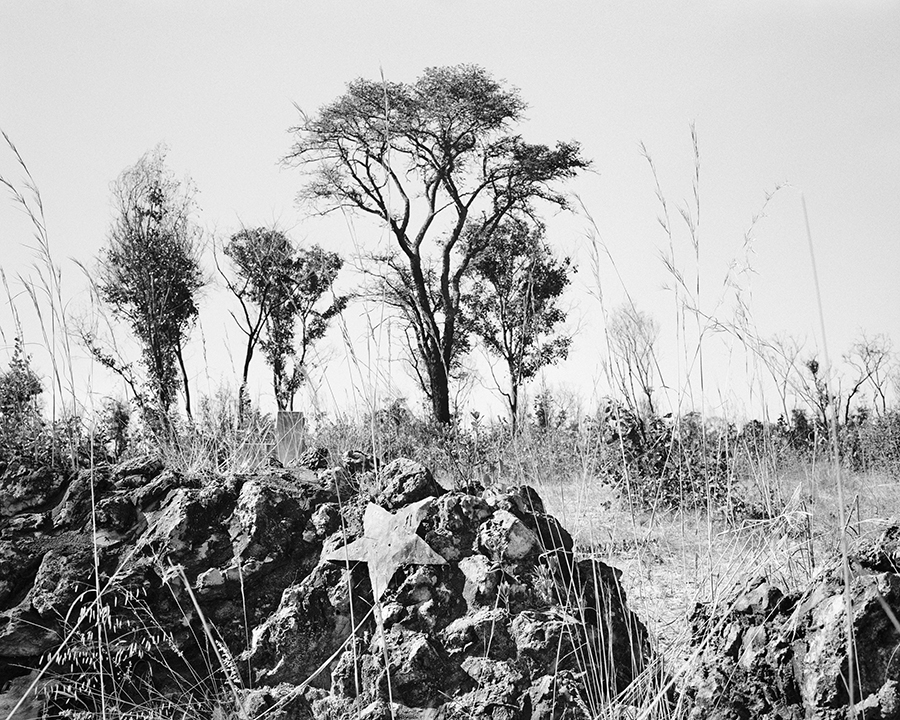Exploring Memories and Landscapes
A compelling dialogue unfolds at the Victoria and Albert Museum’s Photography Centre, showcasing the unique artistic perspectives of South African photographers, Jo Ractliffe and Lebohang Kganye. Their discussion, moderated by Fiona Rogers, probes into the emotional landscapes each artist navigates, revealing how photography serves as a conduit for expressing and exploring memory and identity.
Artistic Insights from Jo Ractliffe
Jo Ractliffe’s work is characterized by its haunting portrayal of conflict-impacted landscapes. In her series titled As Terras do Fim do Mundo (Land at the End of the World), she meditates on South Africa’s tumultuous history, particularly exploring the remnants of its involvement in Angola’s border war. Capturing silence in her photographs, Ractliffe emphasizes the deeper narratives embedded in the land, posing profound questions about how trauma resides within historical landscapes.
Ractliffe notes, “My focus was not on evident destruction, but rather on how histories settle into the ground.” This approach invites viewers to reflect on the invisible scars left by conflict—and how landscapes can encapsulate the essence of bygone eras.
Lebohang Kganye’s Personal Journey
Contrastingly, Lebohang Kganye brings a personal touch to her art. Her film, Shadows of Re-Memory, blends archival fragments with her personal narrative, making memory a central theme. Kganye describes her work as an act of remembrance and reconciliation with her own past, particularly in relation to her mother’s legacy.
Recalling a pivotal moment with Ractliffe, she shares, “Finding my mother’s clothes marked the beginning of my journey into photography. It was a way of retracing my steps, connecting with her through those physical pieces.” Kganye’s work serves as an exploration of inheritance and transformation, as she navigates her family’s history while reimagining the past through her art.
Intersecting Memory and Political Consciousness
Both artists navigate politics through their lenses, albeit in different manners. Ractliffe’s work gives voice to the historical narratives that shape landscapes, while Kganye’s pieces reveal the inner workings of identity and representation. Their dialogue demonstrates how art can embody both personal and collective experiences, bridging the gap between the individual and the historical.
Kganye introduces the idea of representation, emphasizing the importance of owning one’s narrative in a society where identity is often marginalized. Her reflections on familial photographs reveal a nuanced perspective on the politics of visibility, as she considers how women in her family were often portrayed. She describes, “The family album became a haven for chosen representation—a powerful act of asserting our identities.”
The Burden and Responsibility of Representation
As South African artists, both Ractliffe and Kganye feel the weight of representation. Ractliffe contextualizes her work within a historical narrative where art cannot be divorced from activism—a sentiment shared by Kganye, who recognizes the personal as inherently political. This bond underscores a shared understanding of their cultural roles and responsibilities within the visual arts.
Visiting the V&A’s Photography Centre
The engaging dialogue between Ractliffe and Kganye not only sheds light on their artistic practices but also invites visitors to reflect on the implications of their work. The V&A’s Photography Centre provides a platform for audiences to explore how memory intertwines with photography, history, and representation. As they present their work, Ractliffe and Kganye challenge visitors to consider the landscapes of their own lives and the narratives they choose to tell.
Key Takeaways from the Dialogue
- Photography as a Medium of Memory: The conversation highlights photography’s power to evoke memories and facilitate emotional connections.
- Intersection of Personal and Political: Both artists navigate complex identities and histories, emphasizing the political undertones in their work.
- Representation Matters: The discussion illustrates how owning one’s narrative is crucial, particularly in contexts of marginalization.
Висновок
Ractliffe and Kganye’s conversation serves as an enlightening exploration of how photography captures the essence of memory and identity. Their discussions bear significance not only for the individuals they represent but also for broader societal narratives that have historically been overlooked. While reviews may provide insights, personal experiences remain unparalleled. LocalsRide offers a seamless way to navigate your own adventures, whether it’s selecting a car with a driver or planning personalized journeys. With transparency and affordability at its heart, LocalsRide empowers users to make informed travel decisions while embracing the essence of modern exploration. Book your Ride at LocalsRide.com.

